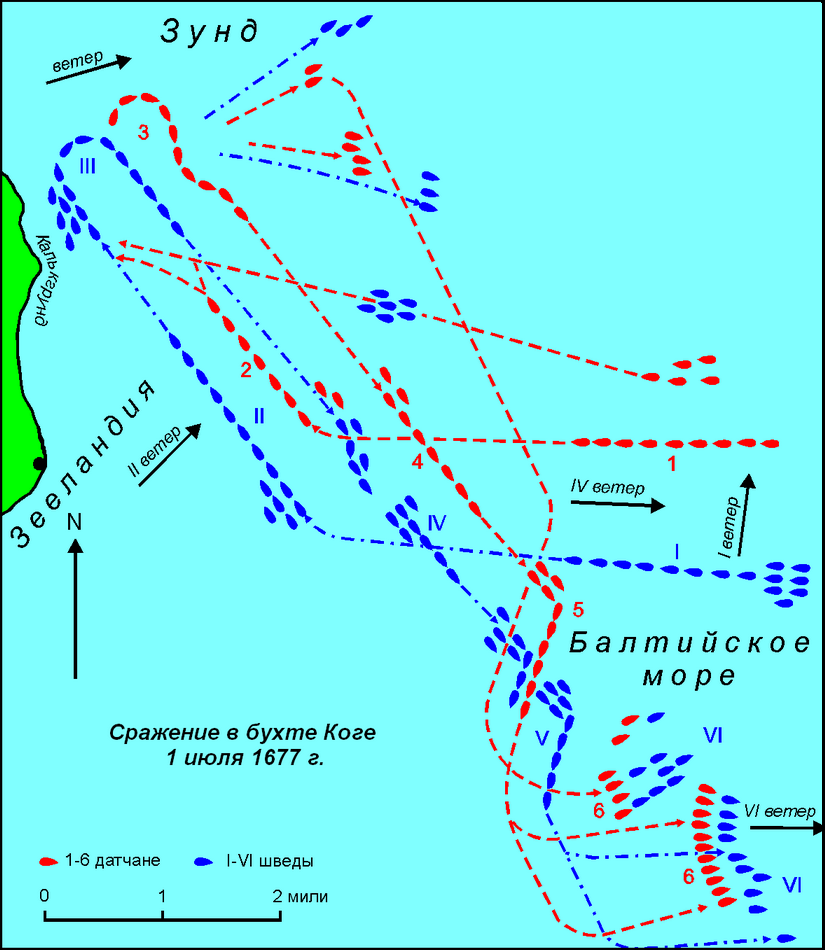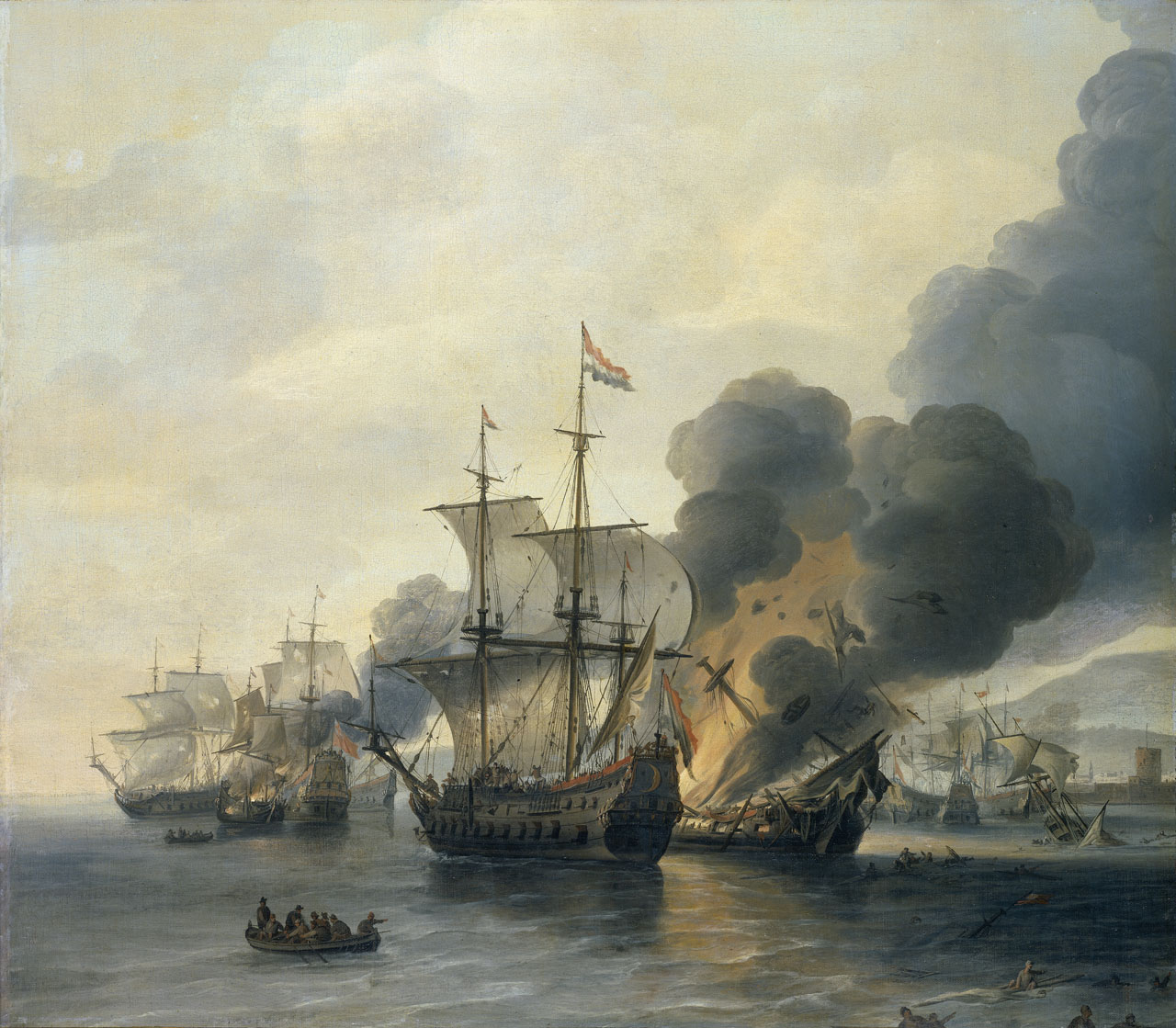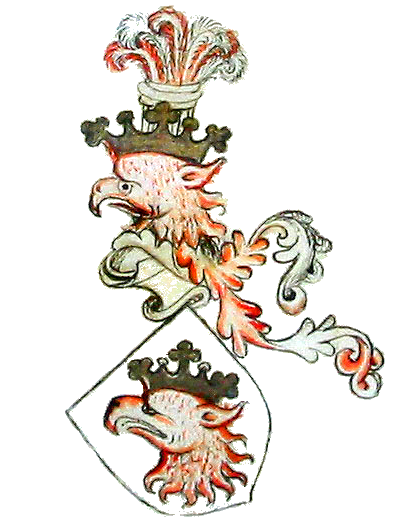|
Battle Of Køge Bay (1677)
The Battle of Køge Bay was a naval battle between Denmark-Norway and Sweden that took place in bay off Køge 1–2 July 1677 during the Scanian War. The battle was a major success for admiral Niels Juel and is regarded as the greatest naval victory in Danish naval history. Background Denmark, the Dutch Republic, Brandenburg and several German states were at war with Sweden and its allies as part of the larger Franco-Dutch War. After the defeat at the Battle of Fehrbellin against a Brandenburg army, Swedish possessions in northern Germany were under great pressure and in need of reinforcements. Attempts to relieve the southern Baltic provinces had failed and the Danish fleet had inflicted a stunning blow to the Swedish navy at the Battle of Öland in June 1676. The Swedish navy had lost three of its largest ships, '' Kronan'', ''Svärdet'' and ''Äpplet'', the Admiral of the Realm Lorentz Creutz and the experienced admiral Claas Uggla while the Danish fleet did not lose a sin ... [...More Info...] [...Related Items...] OR: [Wikipedia] [Google] [Baidu] |
Claus Møinichen
Claus Møinichen or Claus á Møinichen (c. 1660 in Copenhagen – probably after 1726) was a Danish painter. He was the son of the Copenhagen surgeon Sixtus Møinichen (1629–1666) and his wife Anna Thiesens. Little is known about him. He designed ornaments for the edition of the 'kongeloven' published in 1709. He also produced portraits of Frederick IV of Denmark, Kirsten Bille, Berte Skeel and others, as well as producing images of scenes from Ovid's '' Metamorphoses'' for the king. From 1686 to 1688 he painted the audience chamber at Frederiksborg Castle with scenes from the Scanian War. He married Cathrine Frederiksdatter Fohlmann before 1703 and the couple had several children. Records show he was still alive in 1726 and – though his date of death is not recorded – he probably died soon after this. Works Image:Danish_ invasion_fleet-Claus_Møinichen.jpg, Danish invasion fleet Image:Slaget_ ved_oland_maleri_av_claus_moinichen_1686.jpg, Battle of Öland The Ba ... [...More Info...] [...Related Items...] OR: [Wikipedia] [Google] [Baidu] |
Battle Of Halmstad
The Battle of Halmstad, also known as the Battle at Fyllebro, was fought on August 17, 1676, at Fyllebro, approximately five kilometres south of the town of Halmstad in the province of Halland in southwest Sweden. It was the last battle in Halland between Denmark and Sweden. Prelude King Christian V and the Danish army that landed at Råå near Helsingborg in Scania in late June 1676 managed to conquer almost the whole province in less than a month. The Swedish army had to retreat north to Växjö. In early August, Major General Jacob Duncan, a native Scot, was sent north, to Halland, with about 4,000 Danish troops to take the key-town of Halmstad and if possible advance further north to join forces with General Ulrik Frederick Gyldenløve, who had reached Gothenburg with a Norwegian army and was threatening to besiege the city. On August 10, King Charles XI of Sweden received information that Duncan was moving towards Halmstad. On August 11, he and his field army headed w ... [...More Info...] [...Related Items...] OR: [Wikipedia] [Google] [Baidu] |
Great Belt
The Great Belt ( da, Storebælt, ) is a strait between the major islands of Zealand (''Sjælland'') and Funen (''Fyn'') in Denmark. It is one of the three Danish Straits. Effectively dividing Denmark in two, the Belt was served by the Great Belt ferries from the late 19th century until the islands were connected by the Great Belt Fixed Link in 1997–98. Geography The Great Belt is the largest and most important of the three Danish Straits that connect the Baltic Sea to the Kattegat strait and Atlantic Ocean. The others are the Øresund and the Little Belt straits. The Great Belt is long and wide. It flows around two major islands: Samsø in the north and Langeland to the south. At Sprogø the Great Belt divides into the East Channel and the West Channel. Both are traversed by the Great Belt Fixed Link, but a tunnel also runs under the East Channel. Geology In pre-glacial times a river, which the Baltic Sea basin then contained and which geologists call the Eridanos, must ... [...More Info...] [...Related Items...] OR: [Wikipedia] [Google] [Baidu] |
Gothenburg
Gothenburg (; abbreviated Gbg; sv, Göteborg ) is the second-largest city in Sweden, fifth-largest in the Nordic countries, and capital of the Västra Götaland County. It is situated by the Kattegat, on the west coast of Sweden, and has a population of approximately 590,000 in the city proper and about 1.1 million inhabitants in the metropolitan area. Gothenburg was founded as a heavily fortified, primarily Dutch, trading colony, by royal charter in 1621 by King Gustavus Adolphus. In addition to the generous privileges (e.g. tax relaxation) given to his Dutch allies from the ongoing Thirty Years' War, the king also attracted significant numbers of his German and Scottish allies to populate his only town on the western coast. At a key strategic location at the mouth of the Göta älv, where Scandinavia's largest drainage basin enters the sea, the Port of Gothenburg is now the largest port in the Nordic countries. Gothenburg is home to many students, as the city incl ... [...More Info...] [...Related Items...] OR: [Wikipedia] [Google] [Baidu] |
Lorentz Creutz
Lorentz Creutz (; 16151 June 1676) was a Swedish ''friherre'' (roughly equivalent to a baron), government administrator, county governor (''landshövding'') of Kopparberg County (1655–62), member of the Privy Council and supreme commander of the Swedish navy for a few months in 1676. He successfully served as an administrator in the Treasury in later years and was appointed as navy commander in early 1676 during the Scanian War. However, his complete lack of naval military experience combined with the generally poor state of the Swedish fleet led to his death on '' Kronan'', the flagship of the navy, at the battle of Öland on 1 June 1676. Creutz married the ''friherrinna'' (roughly baroness) Elsa Duwall (1620–1675), daughter of general Jakob MacDougall (ennobled as "Duvall") and Anna von der Berge. Children * * *Carl Gustaf Creutz Sources *''Svensk uppslagsbok''. Malmö 1931. *''Den introducerade svenska adelns ättartavlor'', Gustaf Elgenstierna See also *Creutz fami ... [...More Info...] [...Related Items...] OR: [Wikipedia] [Google] [Baidu] |
Gustaf Otto Stenbock
Count Gustaf Otto Stenbock (7 September 1614 – 24 September 1685) was a Swedish soldier and politician. He was son of Friherre Gustav Eriksson Stenbock (1575–1629) and Countess Beata Margareta Brahe (1583–1645), born in Torpa, Länghem parish, Tranemo Municipality, Västergötland, Sweden. He was appointed commanding officer of the Kronoberg Regiment in 1637, Major General in 1643, Privy Councilor in 1652, Field Marshal in 1656, under the terms of the Treaty of Roskilde in 1658 became Governor General of Scania, Halland and Blekinge, Lord High Admiral in 1664, and Chancellor of Lund University in 1666. He was deposed as admiral by King Charles XI of Sweden in 1675. Family 22 July 1645 married 1stly Baroness Brita Horn of Åminne (died 1685). ;Children: *Count Gustaf Stenbock (1646–1672) *Beata Stenbock (died 1648) *Sigrid Stenbock (died 1648) *Christina Katharina Stenbock (1649–1719), married Swedish statesman and Governor-General of Estonia Anders Torstenson ... [...More Info...] [...Related Items...] OR: [Wikipedia] [Google] [Baidu] |
Cornelis Tromp
Cornelis Maartenszoon Tromp, ''Count of Sølvesborg'' (3 September 1629 – 29 May 1691) was a Dutch naval officer who served as lieutenant-admiral general in the Dutch Navy, and briefly as a general admiral in the Royal Danish Navy. Tromp fought in the Anglo-Dutch Wars and the Scanian War. His father was Lieutenant Admiral Maarten Tromp. Biography Early life Cornelis Maartenszoon Tromp was born on 9 September 1629, in Rotterdam, in the historically dominant county of Holland. He was the second son of Maarten Tromp and Dina Cornelisdochter de Haas. His name Maartenszoon, sometimes abbreviated to Maartensz, is a patronymic. He had two full brothers, Harper and Johan.Tromp, Cornelis in ''Nieuw Nederlandsch biografisch woordenboek. Deel 5''. Retrieved 5 May 2009. In 1633, when he was only fou ... [...More Info...] [...Related Items...] OR: [Wikipedia] [Google] [Baidu] |
Zealand
Zealand ( da, Sjælland ) at 7,031 km2 is the largest and most populous island in Denmark proper (thus excluding Greenland and Disko Island, which are larger in size). Zealand had a population of 2,319,705 on 1 January 2020. It is the 13th-largest island in Europe by area and the 4th most populous. It is connected to Sprogø and Funen by the Great Belt Fixed Link and to Amager by several bridges in Copenhagen. Indirectly, through the island of Amager and the Øresund Bridge, it is also linked to Scania in Sweden. In the south, the Storstrøm Bridge and the Farø Bridges connect it to Falster, and beyond that island to Lolland, from where the Fehmarnbelt Tunnel to Germany is planned. Copenhagen, the capital of Denmark, with a population between 1.3 and 1.4 million people in 2020, is located mostly on the eastern shore of Zealand and partly on the island of Amager. Other cities on Zealand include Roskilde, Hillerød, Næstved, Helsingør, Slagelse, ... [...More Info...] [...Related Items...] OR: [Wikipedia] [Google] [Baidu] |
Malmö
Malmö (, ; da, Malmø ) is the largest city in the Swedish county (län) of Scania (Skåne). It is the third-largest city in Sweden, after Stockholm and Gothenburg, and the sixth-largest city in the Nordic region, with a municipal population of 350,647 in 2021. The Malmö Metropolitan Region is home to over 700,000 people, and the Øresund Region, which includes Malmö and Copenhagen, is home to 4 million people. Malmö was one of the earliest and most industrialised towns in Scandinavia, but it struggled to adapt to post-industrialism. Since the 2000 completion of the Öresund Bridge, Malmö has undergone a major transformation, producing new architectural developments, supporting new biotech and IT companies, and attracting students through Malmö University and other higher education facilities. Over time, Malmö's demographics have changed and by the turn of the 2020s almost half the municipal population had a foreign background. The city contains many histo ... [...More Info...] [...Related Items...] OR: [Wikipedia] [Google] [Baidu] |
Helsingborg
Helsingborg (, , , ) is a city A city is a human settlement of notable size.Goodall, B. (1987) ''The Penguin Dictionary of Human Geography''. London: Penguin.Kuper, A. and Kuper, J., eds (1996) ''The Social Science Encyclopedia''. 2nd edition. London: Routledge. It can be de ... and the seat of Helsingborg Municipality, Scania County, Scania (Skåne), Sweden. It is the second-largest city in Scania (after Malmö) and List of urban areas in Sweden by population, ninth-largest in Sweden, with a population of 113,816 (2020). Helsingborg is the central urban area of northwestern Scania and Sweden's closest point to Denmark: the Danish city Helsingør is clearly visible about to the west on the other side of the Øresund. The HH Ferry route across the sound has more than 70 car ferry departures from each harbour every day. Historic Helsingborg, with its many old buildings, is a scenic coastal city. The buildings are a blend of old-style stone-built churches and a 600-year-old m ... [...More Info...] [...Related Items...] OR: [Wikipedia] [Google] [Baidu] |





